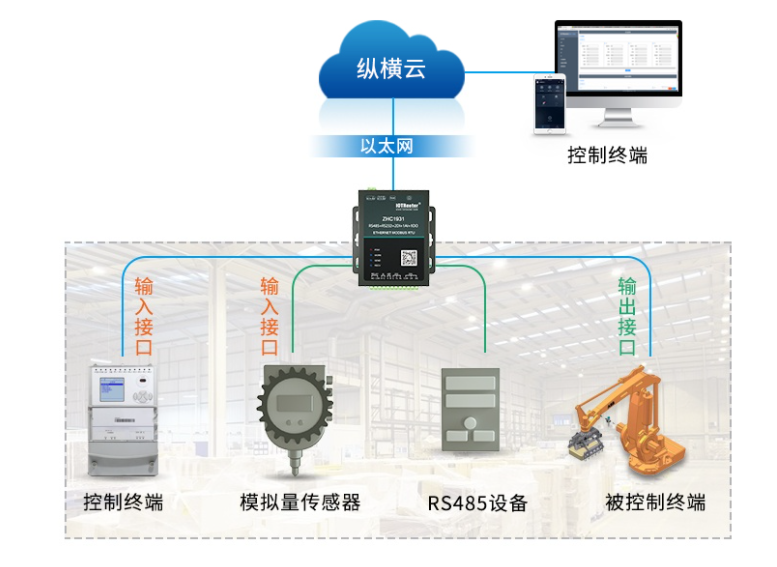In the early days, serial port server products were large and required a lot of resources for processing. With the development of technology, new integrated circuit designs have been made, thereby reducing the size of the serial server. This facilitates the upgrade of serial device servers, which are cost-effective solutions with compact size. The serial device server provides the function of transmitting data between the computer serial port (COM port) and the Ethernet LAN. With this, industries can utilize Ethernet networks in place of serial cables. The use of a serial port server helps reduce workstation clutter and provides architects with the ability to place serial devices farther away from the computers that use them. Serial servers provide the flexibility to work with all types of serial devices and peripherals such as printers, scanners and other peripherals.
Serial port server networking method
Serial device servers are available in two networking configurations, wired and wireless. These serial servers are widely used in applications where the connected devices are too diverse. The serial server provides multi-port connectivity options via Ethernet with connectivity. Serial servers find application in developing connectivity by enabling serial devices to be placed in a network and function independently of a computer’s serial port. Because the server is port independent, it provides flexibility for devices to connect and access from anywhere on the network.

Classification of serial port servers
Based on port type, the market can be divided into single serial port, dual serial port, quad serial port, eight serial port and other ports. According to global Fact.MR research, the four-serial port server segment is expected to have a compound annual growth rate of 9.6% in the serial port server market.
The European region is expected to witness relatively high growth in the serial server market as the region has developed the serial server industry and the market has grown over the product life cycle. The APEJ market is growing rapidly with the increasing application of access control systems and POS systems leading to widespread adoption of serial device servers.
Serial server market trends
Serial servers are efficient devices that increase the flexibility of data transmission in networked environments. These devices allow transparent transmission of data from the serial server’s Ethernet to the serial interface. Serial servers increase availability and uptime by providing seamless protection in the event of power input failure . The serial port server is not only easy to operate, but also easy to install, especially the rail-type serial port server. These factors drive the adoption of serial servers in the market.
A serial server or serial device adapter provides the necessary interfaces to enable serial-only device deployment in a fully networked environment. Industry is focusing on the deployment of devices that are easy to install and configure. Since no additional programming effort is required on the host machine, software development costs can be significantly reduced. Serial device servers also provide secure industrial networking. Therefore, rising demand for cost-effective solutions across industries will drive the market growth of serial port servers during the forecast period.
Vendors that provide serial port servers are investing heavily in providing advanced serial device servers. The goal of these companies is to provide devices that are low-cost, efficient, and can connect to the maximum number of devices. For example, the provider of industrial network products is Internet of Things, which has long been focusing on the research and development, production and sales of industrial network communication products. It is a leading industrial Internet of Things software and hardware solution service provider in the industry. Renren products have passed ISO9001 quality management system certification, and have nearly a hundred patents and software copyrights. They also have a network access license from the Ministry of Industry and Information Technology, CCC, CE, FCC, RoHS, KCC, WEEE, TELEC, IC, SRRC and many other authoritative certifications.